A side effect of setting A Bargain Struck in Wyoming Territory, 1887, is that it’s made me more aware of the language we use today.
Obviously, when writing novels set in the past, the historical facts have to be established, such as:
Would a second generation homesteader have running water in the house?
Would it be possible for homesteaders to buy clothes in an isolated, newly developed settlement in the 1880s?
How would they organise their sanitary arrangements (the loos, in other words)?
You may think that it would be easy to find the answers to questions like these, but it isn’t. Had I set the novel earlier in the 1800s, it wouldn’t have been so difficult as much has been written about the lifestyle of the pioneers who travelled in their covered wagons along the Oregon Trail during the 1850s and 1860s, and about the first generation homesteaders, their sodhouses and the hardships they had to endure. However, very little has been written about the changes in the lifestyle and environment of those who lived a generation later.
But it isn’t just the period details that need to be determined, it’s the language, too. We use slang and modern idiom today without even knowing that we’re doing so, and I’ve found that I’m forever opening my dictionary to make sure that my characters don’t use any anachronistic words and phrases.
Because of this, my best friends when I write are:
And, of course, the internet. Google is a wonderful way of discovering the origin of words.
The following are just two of the many things I looked up yesterday – one of which I could use, and one I couldn’t:
feisty Couldn’t use it. Not current in US until after 1896. The term derives from the shortened form of fist (pronounced with a long i, as if feist). A fist is a small dog. The typical feist dog had a reputation for being nervous and tempermental, and this is the origin of the adjective.
knee high to a grasshopper Could use it. It dates from about 1850 – the phrase first appeared in The Democratic Review in 1851.
Unfortunately, not everything is quite so easy to find out; for example, I’ve yet to establish when Honey came into popular usage as a familiar form of address in the US. Happily, though, I shall be going to Wyoming this summer, and I’ll be able to fill in the missing details by visiting the museums there. Reference books are wonderful, but nothing can beat physically exploring the area in which the novel is set.
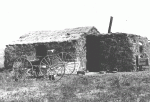
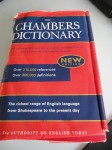
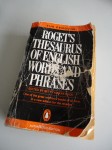
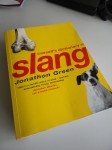
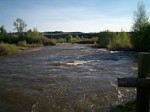


The first Sears Roebuck catalogue was published in 1888. Not exactly “next-day-delivery” though.
Many thanks, John. I knew it was after 1887, but didn’t know the exact date.
Great post. Thanks, Liz.
My dictionary of slang (Chambers) has honey (as in term of affection) as 1940s US. Hope that helps, although I agree – nothing better than doing physical research. Especially if it takes you to interesting places.
Thanks, Bex. I knew that ‘honey-baby’ came into being in the 1940s, but thought that the use of ‘honey’ by itself might pre-date it. It certainly existed with reference to a woman, in the late 19th century US, but I don’t know if it’s used as a term of address at that time. It would be useful for me if it was!!
I really enjoyed this post, Liz. My well-thumbed Roget’s Thesaurus is my absolute standby when I’m writing!
Many thanks, Emma. I had to stick down the cover before snapping it as I was so embarrassed at how used it looked. I don’t want a new one, though, as they always change the layout, and I’m so used to my tried-and-trusted friend as it is.
I have a copy of Isabella Bird’s ‘A Lady’s Life in the Rocky Mountains’ which contains all her letters written to her sister in 1873 about her travels in Colorado Territory. I found it fascinating and can lend it to you if you think it would be helpful.
Definitely, Heather. I should love to borrow the book – I hadn’t heard of it. Colorado is just south of Wyoming, and 1873 is very near the date at which my novel is set. Perhaps I can get it on Tuesday. Thank you.
Hi Liz,
Another interesting post! It’s great to have the excuse to visit a location as research for a novel-I returned to Siena and Florence a few years ago and dragged a few writer friends along with me. It helped that one of them was doing a course in Florence so it was the perfect excuse to visit. I must get myself one of those slang dictionaries. I’ve got a thesaurus as well thumbed as yours-with my name and ‘class: 2L’ written in the front of it from when I was aged 12. I use a much larger one now but don’t have the heart to throw the old one away as I used it for years including throughout university.
Interesting to know the history behind the word ‘feisty’-a word my husband would probably use to describe me at times…!
Thank you for that, Anita. Your trip must have been such fun.
A large number of heroines today are described as ‘feisty’. Bet they wouldn’t like to think that they were being given the attributes of a temperamental dog!
Hi Liz Have you thought of using any of Fanny Trollope’s accounts of travelling in the US (Domestic Manners I think was a bestseller), she was a bit earlier but might be helpful. I haven’t read her myself but have always meant to.
This could be extremely helpful, Cara. I hadn’t heard of the book before. Even if it’s set in an earlier period than is my novel, it will be of interest re language and custom. I’ve now downloaded it to my PC.
Thank you so much for telling me about it. Liz X